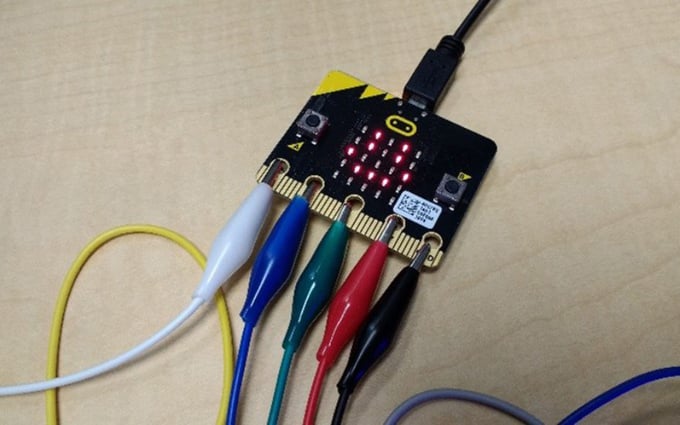Matt Arnold serves as associate director of instruction for Project Lead The Way and has played an integral role in shaping the new computer science experiences for our PLTW K-12 Computer Science pathway.
Imagine walking through a dark, pedestrian tunnel when the ceiling begins to slowly light up with twinkling stars. As more pedestrians enter the tunnel, vibrant colors and shapes flow across the ceiling, increasing in intensity with the rush of people. This isn't a virtual reality experience, but rather an example of physical computing – in this case, the programmable interaction between a tunnel of LEDs (light-emitting diodes) and people walking through it. For entertainment, safety, and the revitalization of an old Victorian railway tunnel, the Clink Street Bridge Tunnel of London, England, now features a similar interactive system.
The concept of physical computing is the focal point of PLTW’s new middle school unit – Computer Science for Innovators and Makers – which schools can offer students starting in the 2017-18 school year.
Computer Science for Innovators and Makers will center on physical computing projects that bring programming out of the virtual environment and into the physical world. Throughout the unit, students will design and develop programmed devices along with the code that brings them to life. These personally relevant, visible, tangible, and shareable creations promote student awareness of interactive systems and broaden their understanding of abstract computer science concepts.
Examples of physical computing projects students might design include interactive art, wearable technology, and mechanical devices, like this pill dispenser. They involve objects, systems, or installations that interact with their environment through sensors (input) and actuators (output). Physical computing projects are often controlled by a computer or microcontroller where the program is stored.
Let's consider a connected door lock. You arrive at your house and pull out your smartphone. You press a button on the phone's screen. You've just provided input to the program or app. Now the program sends a signal to your door lock through the Internet. This signal activates an output as the motor in the locking device rotates to unlock your front door.
Studies show that physical computing projects increase student engagement and learning in computer science education.[1] Female students, in particular, show greater understanding of computer science concepts when programs and code produce immediate, tangible results. The physical nature of making these interactive systems creates a meaningful and engaging learning experience that greatly increases engagement among girls in computer science education.
Lastly, physical computing projects encourage students to be creative. Students are not bound by prescribed materials and are able to incorporate a variety of items to create a device that is extremely personal to each learner. The final design creates an experience that responds to humans, animals, nature, or just about anything in the physical world. Here is one such example of a physical computing project involving conductive ink as touch sensors.
Physical computing offers engaging learning opportunities for all students. When students take part in Computer Science for Innovators and Makers, they’ll study not only computer science and physical computing, but how they interact with various subjects and disciplines in the world around them. And by creating meaningful projects with hardware and the code to make it interactive, students develop strong computational thinking skills beneficial in a variety of subjects and careers and prepare themselves for further computer science learning.


